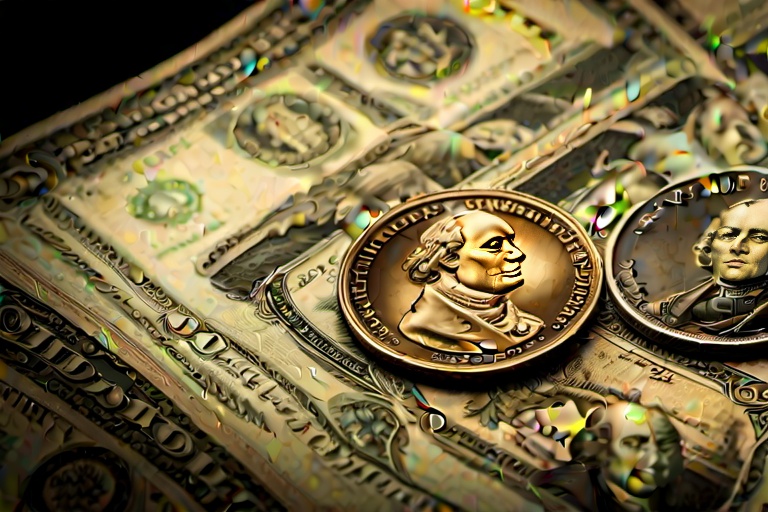Coin collecting is an intricate hobby that requires precision, attention to detail, and the right tools to truly appreciate the fine attributes that differentiate each coin. In recent years, USB microscopes have emerged as an essential instrument for coin enthusiasts. These compact, powerful devices not only aid in examining the minute characteristics of coins but also serve various purposes across different hobbies—from verifying trading card authenticity to detailing miniature figures.
Coin collecting is an intricate hobby that requires precision, attention to detail, and the right tools to truly appreciate the fine attributes that differentiate each coin. In recent years, USB microscopes have emerged as an essential instrument for coin enthusiasts. These compact, powerful devices not only aid in examining the minute characteristics of coins but also serve various purposes across different hobbies—from verifying trading card authenticity to detailing miniature figures.
Understanding the Importance of Magnification
Magnification is a cornerstone feature of any microscope, and USB microscopes are no exception. Yet it's not simply about choosing the highest magnification available. Coin collectors must consider the maximum useful magnification necessary for their tasks. While a high magnification allows you to zoom in on very small details, such as mint marks and surface wear, it can also limit the field of view, making it challenging to study larger areas of a coin. An ideal microscope provides a broad magnification range that accommodates close inspection of fine lines as well as the examination of a coin's overall condition.
The Benefits of Portability and Wireless Features
Portability is another factor that cannot be overlooked. Collectors often need to manipulate coins, turning and shifting them to observe different angles under the microscope. A portable and ideally wireless USB microscope delivers the flexibility needed to work comfortably, reducing the hassle associated with cords that can restrict movement or even lead to mishaps around the workspace.
What Does Price Dictate?
Price is undeniably a critical consideration. The digital microscope market may not see rapid technological leaps, but prices can still vary significantly. Entry-level microscopes, often priced below $20, may offer an introduction to magnification but typically fall short when it comes to the precision needed for coin analysis. At the same time, splurging on models priced well above $60 to $70 does not necessarily guarantee improved clarity that would benefit coin examination. Thus, savvy buyers must navigate through a middle ground, seeking a microscope that presents an optimal blend of function and value.
Top Competitor: The T TAKMLY Wireless Handheld Microscope
Leading the pack is the T TAKMLY wireless handheld microscope, which strikes a balance between price and performance that collectors desire. This model boasts up to 1000x magnification—a robust range suitable for detailed scrutiny. The wireless feature is a significant advantage, permitting unencumbered movement around the workspace. Complemented by a sturdy metal stand and a manageable size, the T TAKMLY microscope stands out as a comprehensive package.
Navigating Your Options: A Buyer's Guide
Venturing into the USB microscope market can be daunting. Magnification, portability, and price form the triad of factors that steer purchasing decisions. But beyond these, potential buyers should also seek out models offering adjustable stands for different viewing angles, LED lighting control to illuminate features clearly, and battery operation for uninterrupted use.
The Deluxe Option: The TOMLOV 1000x
For coin collectors who demand excellence, the TOMLOV 1000x microscope represents the pinnacle of quality. Advertised as an exceptional tool for coin viewing, its features transcend coin collecting, proving to be invaluable in hobbies such as trading card grading. With fine height and angular adjustments, the TOMLOV caters to a collector’s every need and is considered the epitome of USB microscopes.
Setup Process for Your USB Microscope
Installing a USB microscope is straightforward. Compatibility with your operating system should be checked initially, followed by connecting the microscope to your computer via USB. Your computer should recognize the new device automatically, though occasionally, driver installations are necessary. Accompanying software typically offers an array of functions from image and video capture to digital measurements, all enhancing the utility of your USB microscope.
Expanding Horizons with USB Microscopes
Now that we’ve elucidated the seamless setup and extended applicability of USB microscopes, it becomes quite clear how invaluable they are in a collector's toolkit. The high-resolution optics are instrumental for grading and authenticating collectibles, and having utilized them myself, I can vouch for their capability in uncovering details that are often not visible to the naked eye.
Preferred Brands and Personal Insights
When one delves into the market, brands like Celestron, Jiusion, and Carson are recurrently mentioned for their reliable performance. Your individual preferences and budget ultimately dictate your choice. It is always prudent to scrutinize reviews and thoroughly research before purchasing.
Embracing the USB Microscope in Coin Collecting
In conclusion, USB microscopes are not just a luxury—they're a necessity for the detail-oriented world of coin collecting. Whether you're a beginner or a seasoned numismatist, integrating a USB microscope into your array of tools can significantly enrich your appreciation and analysis of coins. It ushers in a whole new perspective, offering a closer look at your collection while also serving various other hobbies with its versatility. With the insights and guidelines provided here, you're well-equipped to select a USB microscope that will serve you faithfully in your numismatic pursuits.
Information for this article was gathered from the following source.


